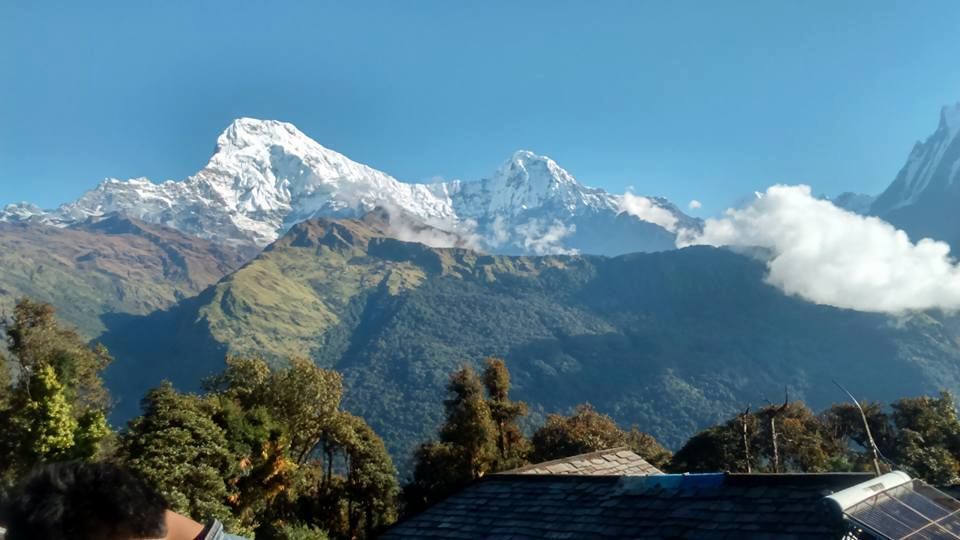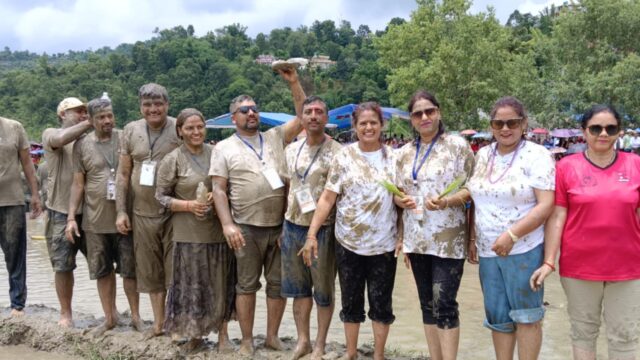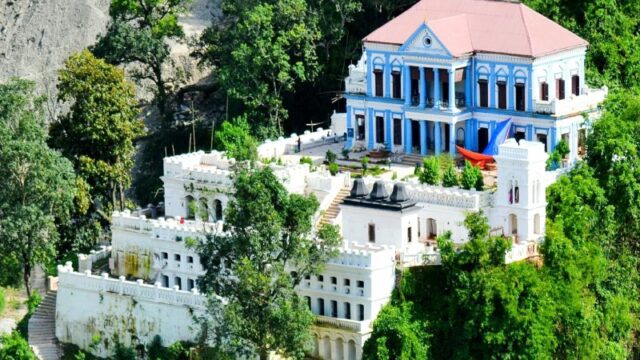Nestled amidst lush green forests and verdant pastures, the picturesque villages of Sikles and Tangting offer an idyllic escape from the urban hustle. The crisp highland breeze, melodic chirping of birds, and the serene flow of the Madi River below create a captivating tableau, epitomizing the harmony of nature and culture in these Gurung-majority settlements. Each village, with its distinct seasonal allure, stands as a testament to the rich heritage and scenic splendor of rural tourism.
The Madi River, originating from the foothills of the majestic Annapurna Himalayas, delineates Sikles and Tangting. Located in Madi Rural Municipality-1 and Ward 2 respectively, these villages are near the tourist hub of Pokhara, making them popular destinations for those seeking solace from city life. Within a few hours’ journey, visitors can immerse themselves in the warm hospitality and rustic charm that these villages offer.
The allure of Sikles and Tangting extends beyond their natural beauty to their traditional lifestyles, local cuisine, and heartfelt hospitality. Uniform houses with stone and tin roofs, stone-paved courtyards and pathways, and traditional architectural elements like old-style windows and doors enhance the villages’ charm. Visitors find respite from their busy lives, soaking in the tranquil ambiance and cultural richness, leaving with a sense of peace and rejuvenation.
Situated 41 kilometers from Pokhara, Sikles lies to the east of Tangting, which is 27 kilometers away. By day, these villages are vibrant and by night, they are aglow with electric lights. As part of the Annapurna Conservation Area Project (ACAP), Sikles and Tangting are popular trekking destinations.
Dhan Gurung, a tourism entrepreneur from Sikles, highlighted the boost in tourist traffic following the inauguration of the Sikles-Kapuche-Kori trekking route. “During the monsoon season, when other areas see a decline in tourists, Kori experiences an influx. The area is covered with wildflowers, making it ideal for monsoon treks,” he remarked.
Trekkers often journey from Sikles to the Kapuche Glacier Lake, nestled at the foot of Annapurna, and then proceed to Kori at an altitude of 3,800 meters. Two trekking routes connect Sikles to Kori via Kapuche Glacier Lake. The Kori trek can be completed in three days, and the rising tourism has spurred the establishment of hotels in Kori. Media and YouTube promotions have further augmented the area’s allure.
Devi Jung Gurung, Ward Chair of Madi-1, recounted that the foundation for tourism in Sikles was laid two decades ago. “Initially, there were community homestays with few tourists. Now, the village is bustling with visitors, especially during peak seasons, with a significant number of domestic tourists,” he said. ACAP data indicates that Sikles attracts up to 50-60 foreign tourists per month.
Ward Chair Gurung noted that Sikles and Kori host dozens of homestays and hotels, with increasing investment in the hospitality sector. Infrastructure developments are underway to create the new Eco Trek route from Sikles to Tara Hilltop to Ghalegaun, and trails from Sikles to Khilang and Chiple are also under construction. “We are developing traditional shepherd paths into trekking routes, supported by the provincial government and rural municipality,” he explained.
Sikles holds historical significance in Nepal’s peace process. On June 16, 2006, Pushpa Kamal Dahal ‘Prachanda’, then chairman of the Communist Party of Nepal (Maoist), made his first public appearance in Sikles after coming above ground, leading to the Comprehensive Peace Accord months later. A peace memorial has been erected in Sikles to commemorate this event.
Tourists visiting Sikles can explore the Gurung Museum, peace memorial, Sikles Park, panoramic mountain views, Gurung temples, and cultural performances. Trekkers have options for short and long-distance routes. Sikles is about a two to two-and-a-half-hour drive from Pokhara, with road upgrades making transportation more convenient.
The walking distance between Sikles and Tangting is about three hours. Sikles is at an altitude of 2,000 meters and Tangting at 1,700 meters. The houses in both villages are similarly designed. Sikles has over 400 houses, while Tangting has about half that number. Ninety-five percent of the population in both villages is Gurung. Tilshova Gurung, chair of the Tangting Community Homestay Management Committee, mentioned that the village has 15 homestays and six hotels. A daily package for domestic tourists costs NPR 1,200, which includes two meals, snacks, and accommodation.
“Our meals feature local dishes like millet porridge, dried greens, corn, beans, potatoes, and local chicken. Seasonal items like fiddlehead ferns are always available,” said Chair Gurung. “We serve local produce based on guest preferences and also offer traditional drinks. To entertain tourists, we present traditional dances and songs.”
Ward Chair Bhoj Bahadur Gurung of Madi-2 highlighted several trekking destinations around Tangting, including Korpudanda, Kalilek, Dudh Pokhari, Kapuche, and Kori. “Dudh Pokhari, located at the borders of Kaski, Lamjung, and Manang, is a significant destination, especially during the Janai Purnima festival when it attracts large crowds,” he said. “Trekking routes from Tangting can also lead to Kapuche and Kori.”
Plans are underway to systematically develop Tangting’s tourism. “A comprehensive tourism master plan is needed to cover all the tourist destinations in Madi Rural Municipality,” he said. “With proper infrastructure and promotion, this area can greatly benefit from tourism.” Residents of Tangting, traditionally engaged in agriculture and animal husbandry, are now also involved in tourism. Tangting offers trekking routes to Bhujung and Ghalegaun in Lamjung and to Manang.
In winter, the snow-capped peaks and in monsoon, the interplay of rain and clouds enhance the beauty of Sikles and Tangting. Annapurna II and Lamjung Himal add to the villages’ charm. Small lakes, ponds, and waterfalls in the highlands attract tourists. The villages also produce traditional bamboo crafts like baskets and mats, and women weaving allo and Dhaka fabrics are a common sight.
During festivals and public holidays, the villages see an influx of tourists. Employees, businesspeople, and others visit to spend weekends. Schools and various organizations also organize educational trips to Sikles and Tangting. “Tourists come here to experience rural life, culture, and trekking,” said Ward Chair Gurung.





